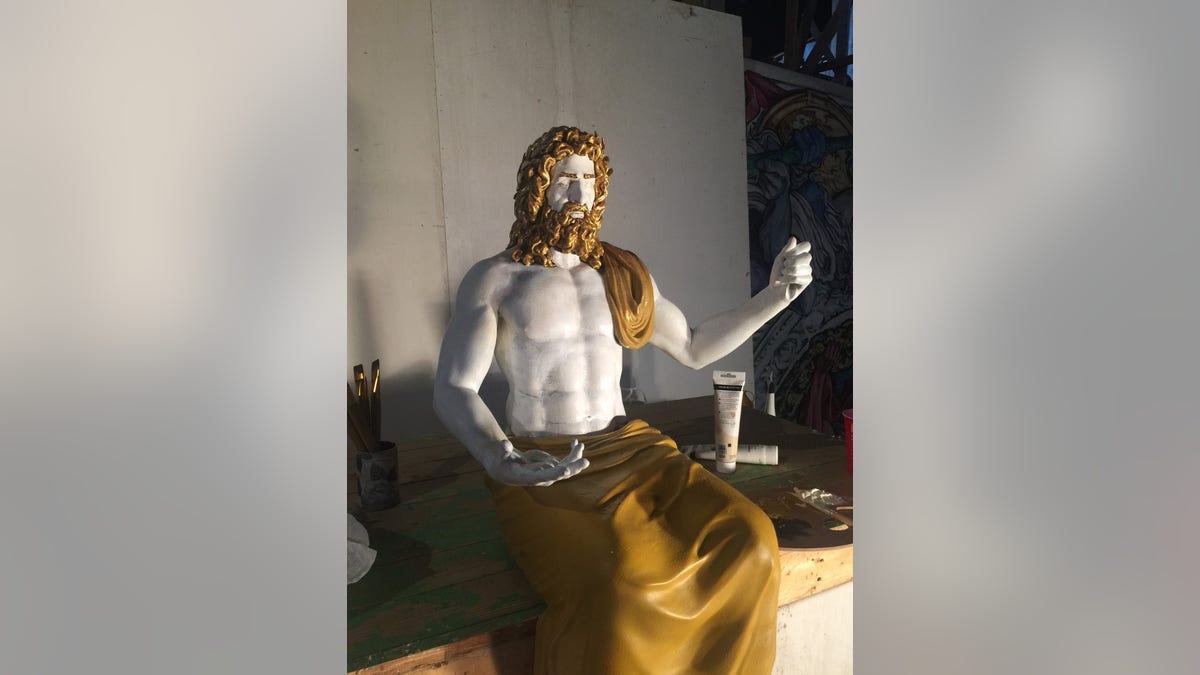
(Stratasys)
Modern technology has turned to the divine, recreating one of the Wonders of the Ancient World in the form of a 3D-printed statue of Zeus, the god that the original Olympic Games honored.
Beginning on Aug. 20, the printed model of Zeus will be on display as part of an exhibition at the Millennium Gate Museum in Atlanta, the city that hosted the Summer Olympics in 1996.
The modern statue of Zeus was born thanks to an industrial 3D printer made by Stratasys, which created the sculpture in layers from the bottom up, according to a video the company released showing the process.
Related:
But the original sculpture was much different, and its roots are in the Olympic Games of antiquity. Those games, which began in 776 B.C., honored Zeus— as the Millennium Gate Museum explains in a statement about the new exhibit— and a giant statue of the him was built by Phidias. That one was 43 feet tall, based on a wooden frame, and had ivory plates and golden panels, the museum said. While no one knows exactly how this Wonder of the Ancient World was destroyed, it did last for over 800 years.
The final replica of Zeus— which Stratasys said stands 6 feet tall— will be part of an exhibit at the museum that will include ancient Greek items that date to over 2,500 years old.
One of the virtues of 3D printing is that since the files the objects are printed from are digital, they can be preserved and recreated. “Throughout history, there are always instances where the most precious works of art get destroyed or broken. In the past, this disappearance meant items were lost forever. That’s why we’re so heavily invested in the artistic value of 3D printing,” Jeremy Kobus, the Millennium Gate Museum’s director, said in a statement.
The 3D printer that created the replica is a Stratasys Fortus 900mc. A company representative said in an email to FoxNews.com that it doesn’t publicly release the cost of the machine.
Follow Rob Verger on Twitter: @robverger




















